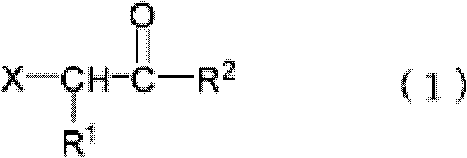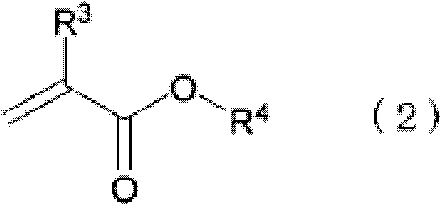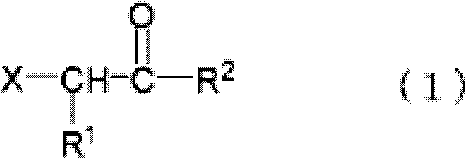Antifouling coating composition, antifouling coating film formed from the composition, coated object having the coating film on surface, and method of antifouling treatment by forming the coating film
An antifouling paint and composition technology, applied in antifouling/underwater paints, coatings, paints containing biocides, etc. Excellent storability, reduced frictional resistance, and maintenance of antifouling properties
- Summary
- Abstract
- Description
- Claims
- Application Information
AI Technical Summary
Problems solved by technology
Method used
Image
Examples
Embodiment
[0150] The features of the present invention will be described more clearly below with reference to Examples and the like. However, the present invention is not limited to these Examples. In addition, in an Example, unless otherwise indicated, "part" means a "weight part". In addition, molecular weight (Mw) is the weight average molecular weight of polystyrene conversion calculated|required by GPC (gel permeation chromatography).
[0151] The conditions of GPC are as follows.
[0152] Device...HLC-8220GPC manufactured by Tosoh Corporation
[0153] Chromatographic column... TSKgel SuperHZM-M 2pcs
[0154] Flow rate...0.35mL / min
[0155] Detector...RI
[0156] Chromatographic column thermostat temperature...40℃
[0157] Eluent...THF
[0158] In addition, the heating residual part means the weight% with respect to the weight before heating after heating copolymer [A] at 125 degreeC for 1 hour.
manufacture example 1
[0159] Production example 1 (manufacture of copolymer [A-1])
[0160] Load 100 parts of solvent (xylene) into a reaction vessel with a thermometer, a reflux condenser, a stirrer and a dropping funnel, then heat to 110-115° C. under a nitrogen atmosphere, and add dropwise the mixture listed in Table 1 while stirring. 45 parts of monomer (1-1), 30 parts of methyl methacrylate (2-1), 25 parts of 2-methoxyethyl acrylate (2-4) and polymerization initiator azobisisobutyl A mixed solution of 0.9 parts of nitrile (1). After dropping, 0.5 part of azobisisobutyronitrile (2) was added to the obtained reaction liquid, and it stirred and reacted at 110 degreeC for 4 hours, and obtained the copolymer [A-1]. Table 2 shows the weight-average molecular weight (Mw) and heating residue of [A-1].
manufacture example 2~17
[0161] Production examples 2 to 17 (production of copolymers [A-2] to [A-17])
[0162] Using the monomers shown in Table 1 and below, the solvents and polymerization initiators shown in Table 2, polymerization was carried out in the same manner as in Production Example 1 to obtain copolymers [A-2] to [A-17] . Table 2 shows the Mw and heating residue of the obtained copolymer.
[0163] 2-1...Methyl methacrylate
[0164] 2-2...N-butyl acrylate
[0165] 2-3......Isobutyl methacrylate
[0166] 2-4...2-methoxyethyl acrylate
[0167] 2-5...2-methoxyethyl methacrylate
[0168] 3-1... Styrene
[0169] Table 1
[0170]
[0171]
PUM
| Property | Measurement | Unit |
|---|---|---|
| thickness | aaaaa | aaaaa |
| diameter | aaaaa | aaaaa |
| height | aaaaa | aaaaa |
Abstract
Description
Claims
Application Information
 Login to View More
Login to View More - R&D
- Intellectual Property
- Life Sciences
- Materials
- Tech Scout
- Unparalleled Data Quality
- Higher Quality Content
- 60% Fewer Hallucinations
Browse by: Latest US Patents, China's latest patents, Technical Efficacy Thesaurus, Application Domain, Technology Topic, Popular Technical Reports.
© 2025 PatSnap. All rights reserved.Legal|Privacy policy|Modern Slavery Act Transparency Statement|Sitemap|About US| Contact US: help@patsnap.com



